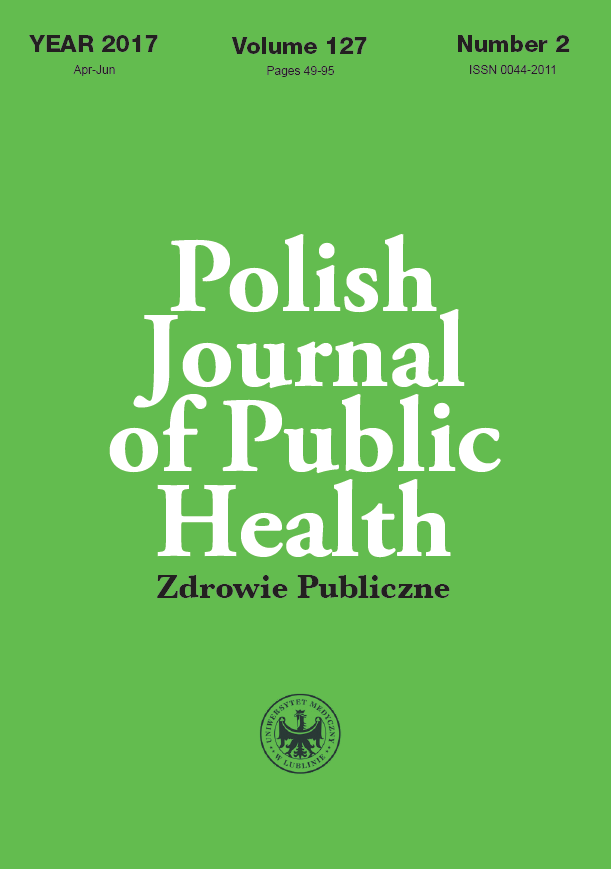Teacher’s burnout syndrome: the phenomenology of the process
DOI:
https://doi.org/10.1515/pjph-2017-0014Keywords:
burnout syndrome, the phenomenology of burnout, teacher’s burnout, job stress, Boyko’s Emotional Burnout InventoryAbstract
Introduction. The article is devoted to the phenomenology of burnout symptoms among teachers and determining their individual characteristics.
Aim. The aim was to study the phenomenology of the burnout process among teachers and to define its individual determinants.
Material and methods. The theoretical basis for the study was a burnout model described by V.V. Boyko considering the burnout as a mechanism of psychological protection of personality in response to the traumatic circumstances of the environment. The following diagnostic tools were used: the Boyko’s Emotional Burnout Inventory, the Inventory on behavior and experience in the working environment by W. Schaarschmidt and A. Fischer and the individual-typological questionnaire by L.Sobchik. In order to calculate and evaluate the results, methods of mathematical statistics were applied.
Results. The results of polling 132 teachers show that more than one third of working teachers show prominent features of high level burnout. This is combined with a number of personality traits and features of behavior, and with an emotional response of the teacher to the circumstances of the working environment, what suggests the need for the development and systematic implementation of prevention programs and correction of burnout among working teachers.
Conclusions. A significant part of the surveyed teachers show signs of burnout expressed at a significant level. Thus, the problem of psychological assistance and psychological support for working teachers remains relevant and requires the search for effective technologies and techniques for providing psychological assistance.
References
1. Vodopyanova N, Starchenkova YS. Burnout syndrome: diagnosis and prevention. 2nd ed. SPb.: Peter;2008; 336.
2. Duran AD, Pacheco NE, Pena LR. El sindrome de burnout en el ambito educativo: Una aproximacion diferencial. Apuntes de Psicologia. 2001;19(2):251-62.
3. Freudenberger HJ. Staff Burn-Out. J Soc Iss. 1974;30(1):159-65.
4. Leiter MP, Bakker AB, Maslach C. Burnout at Work: A psychological perspective. NY: Psychology Press; 2014.
5. Kuznetsov MA, Gritsuk OV. Emotional burnout of teachers: basic laws of dynamics: monograph. Kharkov: GS Skovoroda Kharkov National Pedagogic
University; 2011. p. 206.
6. Alkhrisha M. Burnout among a selective sample of American and Jordanian teachers. Dirasat, Edu Sci. 2002;29(2):405-14.
7. Pines AM. Teacher burnout: A psychodynamic existential perspective. Teachers and Teaching: Theory and Practice. 2002;8(2):121-40.
8. Badawy SM. Egyptian Teachers’ Burnout: The Role of Work Environment Characteristics and Job Stress. J Business Manage Sci. 2015;3(4):101-10. [http://pubs.sciepub.com/jbms/3/4/1]
9. Maslach C, Leiter MP. Understanding the burnout experience: Recent research and its implications for psychiatry. World Psychiatry. 2016;15(2):103-11. [https://www.ncbi.nlm.nih.gov/pmc/articles/PMC4911781/]
10. Boyko VV. The energy of emotions in communication: a look at oneself and on others. Yaroslavl: Avers Press; 2004. p.338. 66 Pol J Public Health 2017;127(2)
11. Selye H. Stress without distress: Translated from English. M.: Progress; 1998. p.125.
12. Ronginskaya TI. Syndrome of burnout in social professions. Psychol J. 2002;23(3):85-95
13. Sobchik LN. Psychology of personality. Theory and practice of psychodiagnostics. SPb.: Publishing house “Rech”; 2005. p.624.
Downloads
Published
Issue
Section
License
Copyright (c) 2018 Polish Journal of Public Health

This work is licensed under a Creative Commons Attribution-NonCommercial-NoDerivatives 3.0 Unported License.


